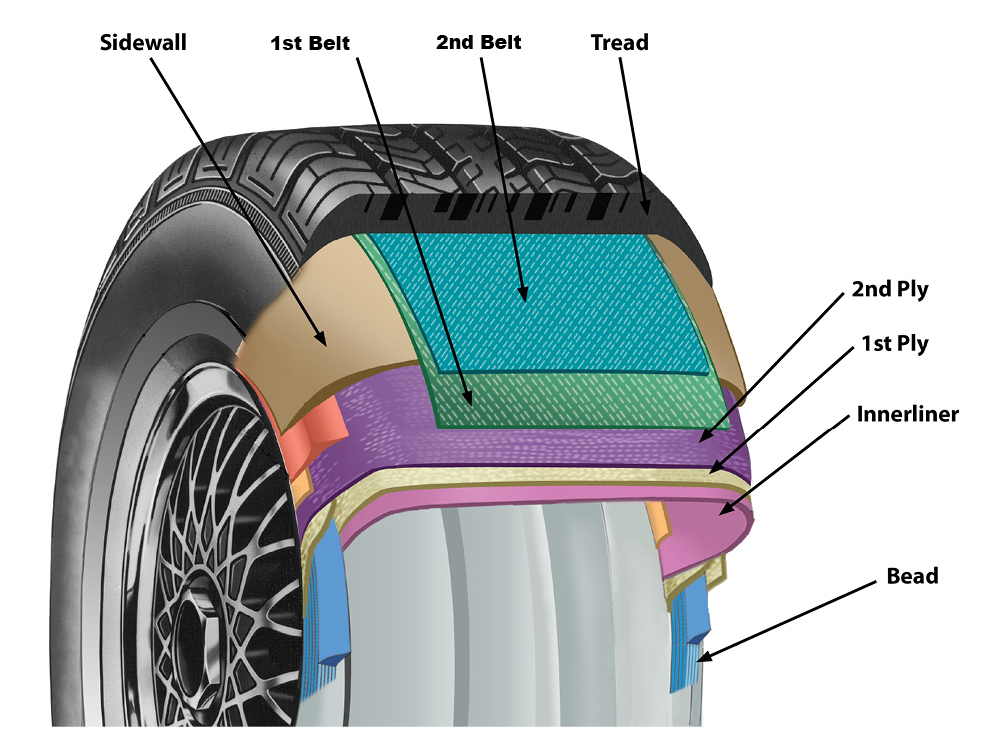Modern tire technology blends a unique mix of chemistry, physics and engineering to give consumers a high degree of comfort, performance, efficiency, reliability and safety. Many tires are custom-designed to meet the stresses and performance needs specified by the maker of a particular model vehicle.
Every tire is carefully inspected, and random samples are pulled for additional safety tests. As part of these tests, tires are x-rayed, cut apart and examined, run on test wheels, or road-tested to evaluate handling, mileage and traction performance. If properly cared for, tires can last a long time – usually from 40,000 to 80,000 miles, depending on the application.
As many as two hundred different raw materials combine into a unique mix of chemistry, physics and engineering to give consumers the highest degree of comfort, performance, efficiency, reliability and safety modern technology and creativity can provide. Here are the basic steps:
Planning and Design
Many tires are custom-designed to meet the stresses and performance needs specified by the maker of a particular model vehicle. The process begins with a computer, which converts the mathematics of the car’s special needs into specifications. A prototype tire is then made to test the tire design’s ability to provide the desired characteristics. Custom-designing a tire for a particular vehicle typically takes many months of testing, inspection, and quality checks by the tire maker and the vehicle maker. Only then does the vehicle maker commit with an order.
Manufacturing
The production process begins with the selection of several types of rubber along with special oils, carbon black, pigments, antioxidants, silica, and other additives that will combine to provide the exact characteristics wanted. Separate compounds are used for different parts of the tire. A machine called a banbury mixer combines the various raw materials for each compound into a homogenized batch of black material with the consistency of gum. The mixing process is computer-controlled to assure uniformity. The compounded materials are then sent to machines for further processing into the sidewalls, treads or other parts of the tire.
The compounded materials are then sent to machines for further processing into the sidewalls, treads or other parts of the tire.
Then the task of assembling the tire begins. The first component to go on the tire building machine is the innerliner, a special rubber that is resistant to air and moisture penetration and takes the place of an inner tube. Next come the body plies and belts, which are often made from polyester and steel. Plies and belts give the tire strength while also providing flexibility. The belts are cut to the precise angle and size the tire engineer specifies to provide the desired ride and handling characteristics. Bronze-coated strands of steel wire, fashioned into two hoops, are implanted into the sidewall of the tires to form the bead, which assures an airtight fit with the rim of the wheel. The tread and sidewalls are put into position over the belt and body plies, and then all the parts are pressed firmly together. The end result is called a “green” or uncured tire.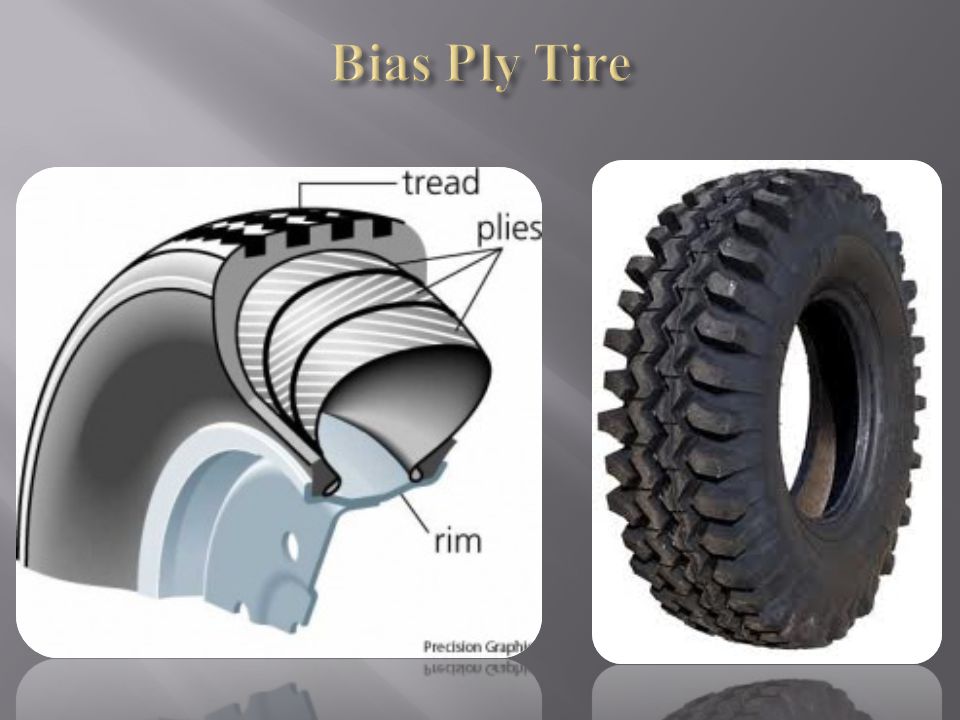
The last step is to cure the tire. The “green” tire is placed inside a mold and inflated to press it against the mold, forming the tread and the tire identification information on the sidewall. Then it is heated at more than 300 degrees Fahrenheit for twelve to fifteen minutes, vulcanizing it to bond the components and to cure the rubber. (FACT: This twelve to fifteen minute curing process is for passenger and light truck tires only, off-road and large tires may take up at a day to cure because of their size!) Every tire is then inspected, and sample tires are randomly taken from the line and tested. Some are x-rayed, some are cut apart to look for flaws, others are run on test wheels, or road-tested to evaluate handling, mileage and traction performance.
A tire is a complex combination of components made from numerous ingredients. But how do we get from the rubber tree to the road? Tire production is a multi-step process.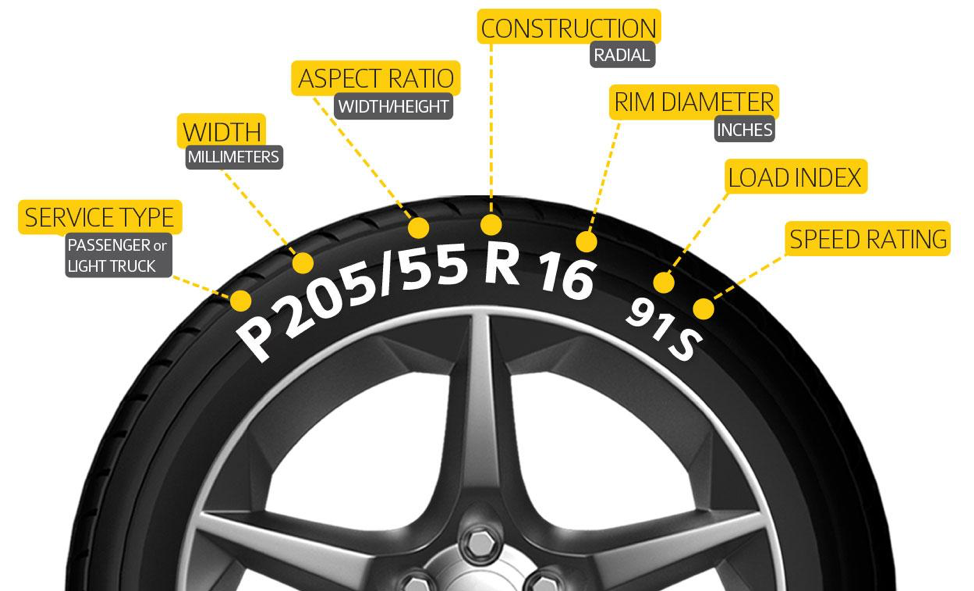 Let’s follow a Continental tire through all five essential stages of tire manufacturing:
Let’s follow a Continental tire through all five essential stages of tire manufacturing:
Various branches of industry supply the tire manufacturing industry with raw materials, which are used to create the necessary compounds.
Steel. The steel industry supplies high-strength steel. This serves as the starting material for the manufacture of steel belts (steel cord) and of bead cores (steel wire).
Chemicals. The chemical industry is a major tire ingredient supplier. In particular, synthetic rubber and materials used to reduce wear, increase grip, and extend the life of a tire.
Natural rubber. Rubber is extracted from special trees grown in large plantations.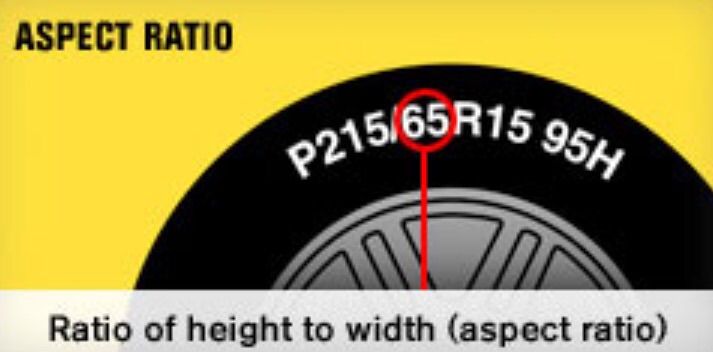 The milky fluid (latex) that flows out coagulates when acid is added to it. It is then cleaned with water and pressed into solid bales for easier transportation and storage.
The milky fluid (latex) that flows out coagulates when acid is added to it. It is then cleaned with water and pressed into solid bales for easier transportation and storage.
Bales of natural and synthetic rubber are sectioned, cut into portions, weighed, and mixed with other ingredients according to precise recipes. Up to twelve different rubber compounds are used in modern passenger car tires.
Textiles. The textile industry supplies base materials (rayon, nylon, polyester, and aramid fibers) for the manufacture of cords that serve as reinforcement in tires.
Steel cord. Pre-treated steel cord supplied on wire spools is fed into a calendar, where it is embedded in one or more layers of rubber. The result is a continuous sheet of cord and rubber. This is cut at a defined angle to the correct length according to tire size and rolled up for further processing.
Tread. Kneadable rubber material that has been blended in a mixer is now ready to be made into the tread. A screw-type extruder shapes the rubber into an endless strip of tread. After extrusion, the weight per meter is checked and the tread cooled by immersion. The tread strip is cut to length for the tire size. Another unit weight control is then carried out.
A screw-type extruder shapes the rubber into an endless strip of tread. After extrusion, the weight per meter is checked and the tread cooled by immersion. The tread strip is cut to length for the tire size. Another unit weight control is then carried out.
Textile cord. A multitude of textile threads are fed into the calendar by a large roller device and embedded in a thin layer of rubber. This endless sheet is then cut to the desired width at a 90° angle to the direction of travel and rewound for further processing.
Steel bead. The core of the bead is made up of many ring-shaped steel wires. Each of them has its own rubber coating. This loop is then fitted with a rubber apex.
Sidewall. Sidewall sections cut to suit the particular tire size are turned out with the extruder.
Inner liner. A calendar forms the airtight inner liner into a wide, thin layer.
Now, the tire building can begin.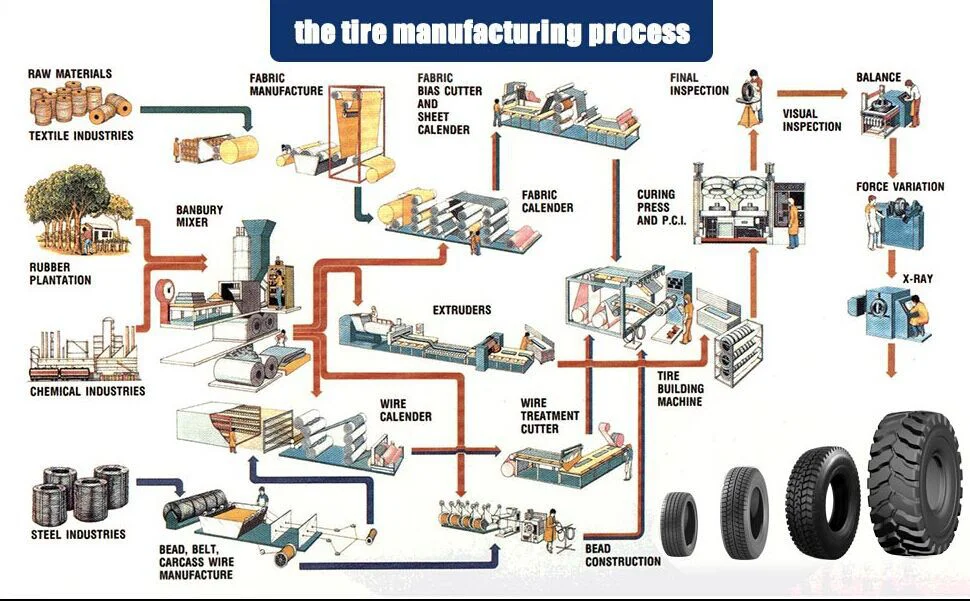 The various semi-finished products come together on the tire building machine and are assembled into what is known as a “green tire.” This is done in two stages: the casing, and the tread/belt assembly. This “green tire” is then sprayed with a special fluid to prepare it for vulcanization.
The various semi-finished products come together on the tire building machine and are assembled into what is known as a “green tire.” This is done in two stages: the casing, and the tread/belt assembly. This “green tire” is then sprayed with a special fluid to prepare it for vulcanization.
Now we’re in the curing press. Here, the tire receives its final shape after being vulcanized for a certain length of time at a certain pressure and temperature. During this process, raw rubber becomes flexible, elastic rubber. Curing press molds are engraved with the tread pattern and sidewall markings.
Each individual stage of production – from the inspection of raw materials to delivery of finished tires – is subject to ongoing quality control.
A multi-layered process ensures Continental tires are thoroughly checked for quality. Finished Continental tires go through:
Once tires have passed all checks and inspections, they are sent to the distribution warehouse for shipment.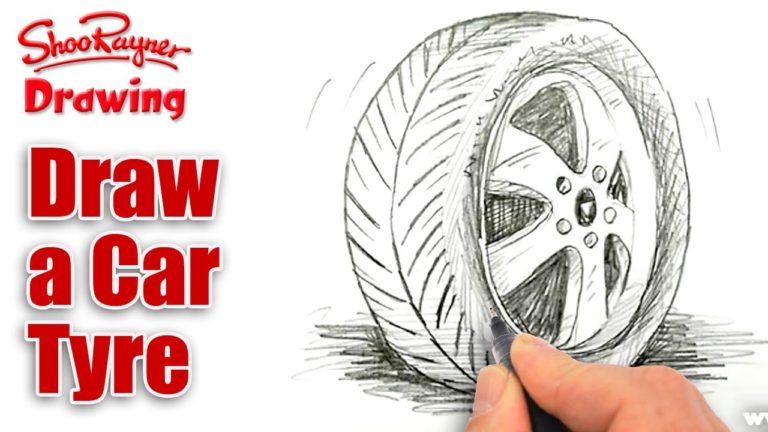
The fastest way to the perfect tire.
Select tiresize or Show results
Let's talk about the structure and arrangement of a car wheel. What is a wheel and what is a tire. What is the difference between a radial tire and a diagonal tire? Information for novice motorists and dummies.
Wheels provide movement by converting rotation into translational motion of the machine. They perceive and smooth out impacts from bumps on the road surface. Controllability, stability and smoothness depend on them.
According to the purpose, the wheels of the car are divided into driving, driven, driven and combined (simultaneously driving and driven). The wheel consists of:
 On the disks of the wheels, conical holes are made, with which the wheel is mounted on studs or nuts. Coincidence of cones of nuts and holes on disks provides exact installation of wheels;
On the disks of the wheels, conical holes are made, with which the wheel is mounted on studs or nuts. Coincidence of cones of nuts and holes on disks provides exact installation of wheels; Car wheel device: 1 - wheel disk, 2 - rim, 3 - bead, 4 - chamber, 5 - sidewall, 6 - cord, 7 - protector.
It is chambered or tubeless. In the chamber there is a rubber chamber filled with air. A tire without a tube is called a tire. The tire consists of a carcass (cord) and tread, as well as sidewalls and beads.
The carcass is the main part of the tire, its power base. It is made of several layers of special fabric - cord. It perceives the pressure of compressed air from the inside and the load from the road outside. Cord material can be: cotton, metal wire, nylon, fiberglass and other materials.
The optimal solution is a breaker with cords twisted from thin steel wires.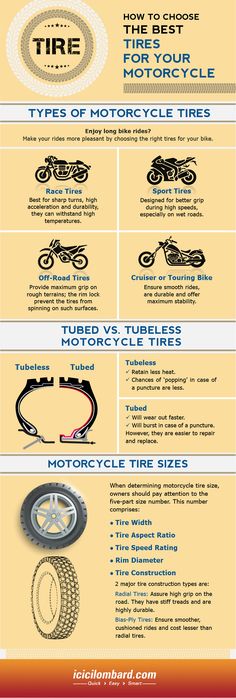 Compared to textile, this cord has many times less stretch. But there are disadvantages: it is less tolerant of loads on low-frequency coverage. If, during a tire puncture, water enters the breaker, especially with chemicals, it quickly collapses from corrosion.
Compared to textile, this cord has many times less stretch. But there are disadvantages: it is less tolerant of loads on low-frequency coverage. If, during a tire puncture, water enters the breaker, especially with chemicals, it quickly collapses from corrosion.
An alternative is the use of synthetics, which has the advantages of textile threads, but does not have the disadvantages of steel rods.
The tread (treadmill) is a thick layer of rubber with a specific pattern. It is located on the outer surface of the tire and is in direct contact with the road surface. The tread pattern can be for good roads (use a small pattern), universal and special for off-road (large tread pattern). In winter, spikes are used in the tread.
A tubeless tire does not have an air bladder. The cavity between the tire and the rim is sealed, because directly filled with air. Therefore, the disk of a tubeless tire differs from the usual one by the presence of sealing beads (bead ring) on the rim.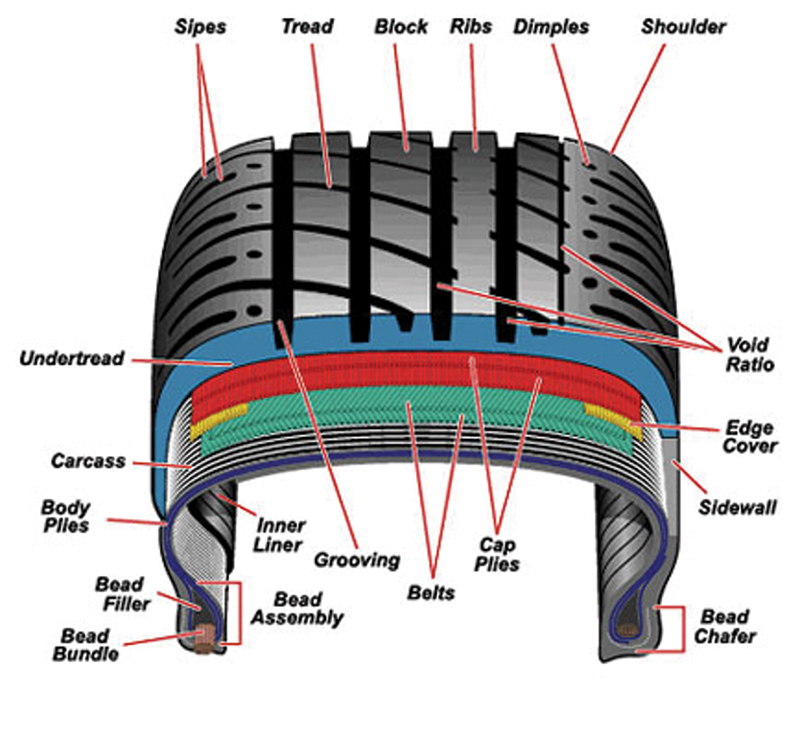 If you use tires with a chamber, then any discs will do, the beads will not interfere.
If you use tires with a chamber, then any discs will do, the beads will not interfere.
In diagonal tires , the cords are crossed, the angle of inclination is 35 - 38 °. They connect the sidewalls of the tire diagonally. Such tires are found only for trucks and special equipment.
In radial tires , the cords are at right angles to the beads. The main advantages are: good grip, low rolling resistance and long service life. Radial tires are more modern than diagonal tires. They are used on modern cars. With them, the car is more stable on the road, more economical and more dynamic.
In order for the tread to hold the road well, it must adapt to its unevenness - be flexible enough. What the frame cord almost does not interfere with. But the deformation of the sidewall of the tire is not desirable - it worsens the control of the car..jpg)
To solve this problem, an additional power ring of several layers of cord is used. It is called a breaker, it does not allow strong deformations in the lateral direction. In order for the breaker to have the necessary rigidity, the threads in it are not laid radially, but diagonally.
On the sidewall of the tire, you can see the inscription 185/60 R15. This means:
The mistake of many motorists is the delusion that the letter R in the marking indicates the radius. This letter has nothing to do with the number 15. She indicates that this rubber is of a radial design, in contrast to the obsolete diagonal ones. And the number 15 is the landing diameter along the rim of the wheel. 15 inches = 381 mm.
And the number 15 is the landing diameter along the rim of the wheel. 15 inches = 381 mm.
A tire is an elastic rubber-cord shell that is installed on the rim of a disc. This is one of the most important elements of the car, since the degree of controllability of the transport and, accordingly, the safety on the road depends on the tires.
Tires also affect fuel consumption and driver comfort while driving. All these factors are determined by the design of the tire, which includes the following main elements:
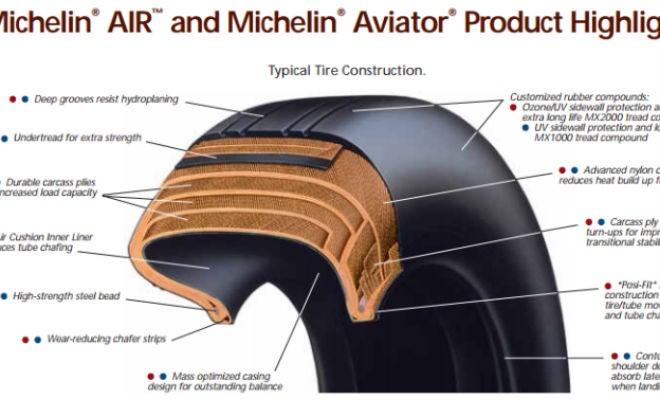
The carcass is the main part of the tire that transfers the loads acting on the wheel from the road side to the wheel rim. It consists of polymer threads, has sufficient rigidity and strength. They are collected in one or more layers. The threads of the frame can go in different directions. Depending on this, there are:
The main difference between a radial tire and a diagonal tire is that, due to its design, such a tire behaves like a caterpillar, having less slippage of the pattern elements. This reduces the wear of a radial tire compared to a diagonal one by 20-30%, and sometimes more.
This reduces the wear of a radial tire compared to a diagonal one by 20-30%, and sometimes more.
This is a special hard belt (for radial tires) located under the treadmill. The breaker is based on several layers of rubberized metal cord (in diagonal tires, if available, the breaker is made of textile material). They are located only in the diagonal direction.
Breakers increase the load resistance of the cord and soften impacts, reducing tread slippage.
Sidewalls are equally important in the design. They protect the cord from external influences and improve the comfort of movement.
Structurally, the tread is a rubber layer with a relief surface, in which there are:
